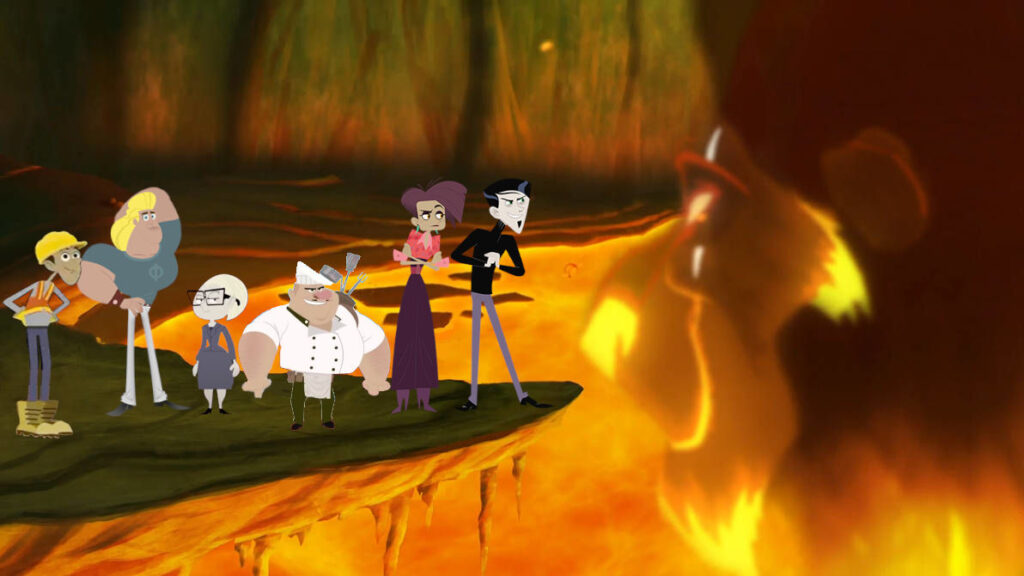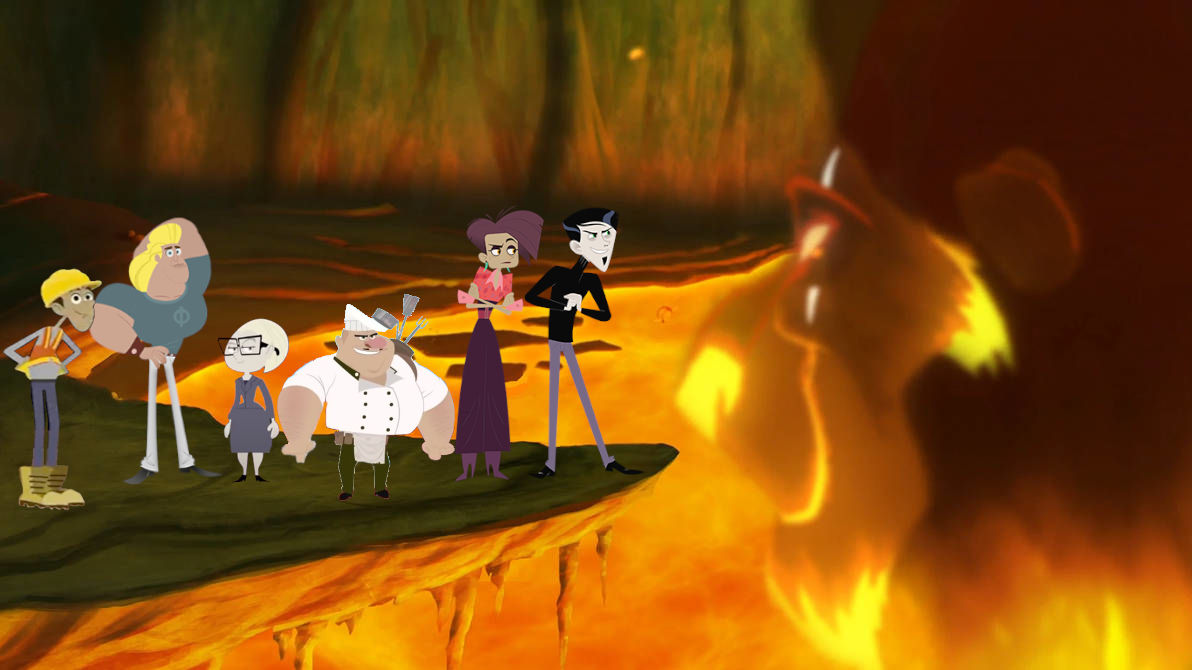
A Deep Dive into All Wild Kratts Villains: Understanding Their Motivations and Impacts
Wild Kratts, the popular animated educational series, has captivated audiences with its blend of adventure, science, and conservation. Central to the show’s engaging narrative are its memorable villains, each posing unique threats to the animal kingdom and the Kratt brothers’ mission. Understanding these Wild Kratts villains is crucial to appreciating the show’s broader themes of environmental stewardship and the importance of protecting wildlife. This article delves into each of the major antagonists, examining their motivations, methods, and the impact they have on the natural world.
The Core Antagonists of Wild Kratts
The Wild Kratts villains are diverse, ranging from profit-driven industrialists to misguided scientists, each presenting a different facet of environmental threats. They challenge the Kratt brothers and their team to use their knowledge and Creature Power Suits to protect animals and their habitats.
Zach Varmitech: The Tech-Savvy Menace
Zachary “Zach” Varmitech is arguably the most frequently recurring and recognizable of the Wild Kratts villains. A self-proclaimed genius inventor, Zach’s primary motivation is technological advancement and personal gain, often at the expense of the environment. He sees animals as mere resources to be exploited for his inventions and schemes.
- Motivations: Profit, technological dominance, and proving his intellectual superiority.
- Methods: Using advanced technology to capture animals, steal their abilities, and create robotic minions.
- Impact: Zach’s actions often lead to habitat destruction, animal endangerment, and the disruption of ecosystems. His constant pursuit of technology without regard for consequences makes him a dangerous threat.
Zach’s character highlights the dangers of unchecked technological ambition and the ethical responsibilities that come with scientific innovation. He consistently underestimates the Kratt brothers, leading to his downfall in many episodes. His signature phrase, “Minions, away!” is instantly recognizable to fans of the show. [See also: Wild Kratts Creature Power Suits Explained]
Gourmand: The Culinary Criminal
Gourmand is another significant antagonist, driven by his insatiable appetite for exotic and endangered animals. A world-renowned chef, he seeks out rare species to create outlandish and often cruel culinary creations. He represents the threat of unsustainable consumption and the devastating impact of the exotic food trade.
- Motivations: Culinary experimentation, satisfying his craving for rare and exotic meats, and achieving notoriety through his unique dishes.
- Methods: Hunting and capturing rare animals, using his culinary skills to prepare them, and evading authorities.
- Impact: Gourmand’s actions directly contribute to the decline of endangered species and disrupt delicate food chains. He embodies the dangers of unchecked consumerism and the ethical considerations of food production.
Gourmand’s character serves as a cautionary tale about the ethical responsibilities of chefs and consumers. The Kratt brothers often have to rescue animals from his clutches, highlighting the vulnerability of endangered species to human exploitation. His over-the-top personality and bizarre culinary creations make him a memorable, albeit repulsive, Wild Kratts villain.
Donita Donata: The Fashion-Obsessed Foe
Donita Donata is a fashion designer with a twisted sense of artistry. She freezes animals alive and uses them as “living statues” in her fashion shows. Driven by vanity and a desire for artistic recognition, Donita represents the exploitation of animals for aesthetic purposes and the dangers of objectifying living beings.
- Motivations: Artistic recognition, creating unique and shocking fashion statements, and maintaining her status as a leading designer.
- Methods: Using her freeze ray to immobilize animals, displaying them in elaborate fashion shows, and evading capture.
- Impact: Donita’s actions cause immense suffering to the animals she freezes and contribute to the perception of animals as objects rather than living beings. She exemplifies the ethical problems with using animals for entertainment and fashion.
Donita’s character highlights the importance of respecting animal welfare and challenging the objectification of living creatures. Her flamboyant personality and extravagant fashion shows contrast sharply with the cruelty of her methods, making her a compelling and disturbing Wild Kratts villain. The Kratt brothers consistently work to thaw out the animals and expose Donita’s unethical practices. [See also: The Ethical Implications of Animal Exploitation in Media]
Paisley Paver: The Road-Building Ruin
Paisley Paver is a land developer obsessed with building roads and infrastructure, often at the expense of natural habitats. She represents the threat of habitat destruction due to urbanization and the importance of sustainable development practices. While she appears in fewer episodes than Zach, Gourmand, and Donita, her actions have significant environmental consequences.
- Motivations: Building roads and infrastructure, maximizing profits through land development, and expanding her company’s reach.
- Methods: Clearing forests and wetlands, building roads and buildings, and disregarding environmental regulations.
- Impact: Paisley’s actions lead to habitat loss, displacement of animals, and the disruption of ecosystems. She embodies the dangers of unchecked development and the importance of environmental planning.
Paisley’s character serves as a reminder of the need for responsible land use and the importance of balancing development with conservation. The Kratt brothers often intervene to protect habitats from her bulldozers, highlighting the ongoing struggle between development and environmental protection. She is a more grounded and realistic type of Wild Kratts villain, representing real-world threats to wildlife.
Common Themes Among the Wild Kratts Villains
Despite their diverse motivations and methods, the Wild Kratts villains share several common traits that make them effective antagonists. They all exhibit a disregard for the well-being of animals and the environment, prioritizing their own selfish desires above the needs of the natural world. They also tend to underestimate the Kratt brothers and their team, leading to their repeated failures.
Furthermore, the villains often represent different aspects of human impact on the environment, such as technological exploitation, unsustainable consumption, objectification of animals, and habitat destruction. By showcasing these diverse threats, Wild Kratts effectively educates viewers about the challenges facing wildlife and the importance of conservation.
The Educational Value of the Wild Kratts Villains
The Wild Kratts villains are not simply antagonists; they also serve an important educational purpose. They provide a context for exploring complex environmental issues in an accessible and engaging way. By witnessing the consequences of the villains’ actions, viewers learn about the importance of protecting animals and their habitats. The show subtly introduces viewers to environmental concepts such as biodiversity, ecosystem balance, and the impact of human activities on the natural world.
The Kratt brothers’ consistent efforts to thwart the villains’ plans reinforce the message that individuals can make a difference in protecting the environment. The show encourages viewers to become more aware of their own impact on the planet and to take action to support conservation efforts. The Wild Kratts villains, therefore, are integral to the show’s success in promoting environmental literacy and inspiring a sense of responsibility towards the natural world.
Beyond the Main Antagonists: Minor Villains and Ethical Dilemmas
While Zach, Gourmand, Donita, and Paisley are the most prominent antagonists, Wild Kratts also features minor villains and situations that present ethical dilemmas. These instances often involve characters who, while not explicitly malicious, make choices that negatively impact animals or the environment. These scenarios provide opportunities to explore the complexities of conservation and the challenges of balancing human needs with the needs of wildlife.
For example, an episode might feature a well-intentioned farmer whose practices inadvertently harm local wildlife. These situations allow the show to address the nuances of environmental issues and to promote critical thinking about sustainable solutions. Even the Kratt brothers themselves sometimes face ethical dilemmas, forcing them to weigh different options and make difficult choices. This adds depth and realism to the show’s portrayal of conservation efforts.
The Enduring Appeal of Wild Kratts and Its Villains
The enduring appeal of Wild Kratts lies in its ability to combine entertainment with education in a seamless and engaging way. The show’s memorable characters, exciting adventures, and informative content have made it a favorite among children and adults alike. The Wild Kratts villains play a crucial role in this success, providing a compelling narrative framework for exploring complex environmental issues. They serve as a constant reminder of the threats facing wildlife and the importance of conservation efforts.
By understanding the motivations and impacts of these antagonists, viewers can gain a deeper appreciation for the show’s broader themes and its message of environmental stewardship. Wild Kratts continues to inspire viewers to learn about the natural world and to take action to protect it for future generations. The show’s success is a testament to the power of storytelling to educate and inspire, and the Wild Kratts villains are an essential part of that story. The legacy of the Wild Kratts villains will continue to educate and entertain for years to come, ensuring that future generations understand the importance of protecting our planet.

